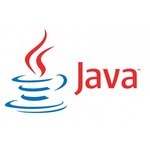随着人工智能技术的日益发展,目标检测系统在计算机视觉领域中扮演着极其重要的角色。这种系统可以自动从图像或视频中识别关键对象,形成对目标的追踪和分析。在本文中,我们将介绍如何使用java编写一个基于人工智能的目标检测系统。
首先,我们需要安装Java和OpenCV。Java是使用Java编写目标检测系统的编程语言,而OpenCV则是一款计算机视觉库,提供了很多实用的API和工具来处理和分析图像。我们可以通过以下步骤来安装和配置Java和OpenCV:
1.1 安装Java JDK
Java JDK可以从官方网站下载。安装完成后,需要设置JAVA_HOME和PATH环境变量。在Windows系统中,可以在环境变量中添加以下内容:
变量名:JAVA_HOME
立即学习“Java免费学习笔记(深入)”;
变量值:C:Program FilesJavajdk1.8.0_45
变量名:PATH
变量值:%JAVA_HOME%in
1.2 安装OpenCV
OpenCV可以从官网下载。下载完成后,解压缩文件,将其复制到项目的工作目录下。然后将文件夹中的opencv-3.4.3.jar文件复制到项目的lib文件夹下。最后,将文件夹中的第三方本地程序库文件夹opencvuildjavad(Windows下)或opencvuildjavalib(Linux下)添加到系统的path环境变量中。
当我们完成了Java和OpenCV的安装和配置后,就可以开始构建目标检测系统了。首先,我们需要载入图像并进行一些基本操作。我们可以使用如下代码实现这些操作:
public static void main(String[] args) {
// 载入图像
Mat image = Imgcodecs.imread("test.jpg");
// 缩放图像
Size size = new Size(800,600);
Imgproc.resize(image,image,size);
// 转换为灰度图像
Mat grayImage = new Mat();
Imgproc.cvtColor(image,grayImage,Imgproc.COLOR_BGR2GRAY);
// 模糊处理
Imgproc.GaussianBlur(grayImage,grayImage,new Size(3,3),0);
// 边缘检测
Mat edges = new Mat();
Imgproc.Canny(grayImage,edges,50,150);
// 显示图像
HighGui.imshow("Test",edges);
HighGui.waitKey(0);
System.exit(0);
}在这段代码中,我们首先使用Imgcodecs.imread()函数从本地文件系统中载入图像。然后,我们使用Imgproc.resize()函数将图像缩放到800×600的尺寸。接下来,我们使用Imgproc.cvtColor()函数将图像转换为灰度图像。然后,我们使用Imgproc.GaussianBlur()函数对灰度图像进行模糊处理,以减少噪声和干扰。最后,我们使用Imgproc.Canny()函数进行边缘检测,以便后续的目标检测。
在进行了基本的图像处理之后,我们可以开始进行目标检测了。为了实现这个功能,我们需要首先选择一个合适的目标检测算法。在本文中,我们将使用一种基于OpenCV的Haar特征分类器来进行目标检测。其具体实现步骤如下:
3.1 选择合适的Haar分类器
Haar分类器是一种经典的目标检测算法,其基本思路就是通过观察对象的形态特征来辨别它们。具体来说,Haar分类器使用一个内部特征值来表示目标,该值通过计算目标区域内的灰度值的差异得到。如果目标对象的形态特征可以通过一组特征值来表示,那么我们就可以通过比较这些特征值来判断一个图像中是否存在目标对象。
在本文中,我们将使用OpenCV提供的已经训练好的Haar特征分类器来进行目标检测。这些分类器已经包含了大量的正负样本,可以通过反向传播训练得到。
3.2 训练Haar分类器
为了开始人工智能目标检测,我们需要使用OpenCV内置的训练工具进行Haar分类器的训练。训练过程需要提供一组正负样本图像,通常样本图像越多效果越好。
3.3 进行目标检测
通过以上步骤,我们已经完成了Haar分类器的训练,可以使用它来进行目标检测。在Java中,我们可以使用如下代码实现Haar分类器的目标检测:
public static void main(String[] args) {
// 载入图像
Mat image = Imgcodecs.imread("test.jpg");
// 装载分类器
CascadeClassifier detector = new CascadeClassifier("classifier.xml");
MatOfRect targets = new MatOfRect();
// 检测目标
detector.detectMultiScale(image,targets);
// 在图像上标示目标
for(Rect rect: targets.toArray()){
Imgproc.rectangle(image,rect.tl(),rect.br(),new Scalar(0,0,255),2);
}
// 显示图像
HighGui.imshow("Test",image);
HighGui.waitKey(0);
System.exit(0);
}在这段代码中,我们首先使用Imgcodecs.imread()函数从本地文件系统中载入图像。然后,我们使用CascadeClassifier类构建一个分类器对象,并使用它对图像进行检测。检测结果存储在一个MatOfRect类型的对象中。最后,我们使用Imgproc.rectangle()函数将目标在图像上进行标示,并使用HighGui.imshow()函数显示检测结果。
在本文中,我们介绍了如何使用Java编写一个基于人工智能的目标检测系统。我们首先介绍了Java和OpenCV的安装和配置,然后演示了一些基本的图像处理功能,最后使用Haar特征分类器实现了目标检测。有了这些知识和技能基础,读者可以进一步地学习和探索目标检测系统中更为深入和高级的应用和技术,如YOLO、RCNN等,以便更好地适应不断发展的人工智能时代。
以上就是如何使用Java编写一个基于人工智能的目标检测系统的详细内容,更多请关注php中文网其它相关文章!

java怎么学习?java怎么入门?java在哪学?java怎么学才快?不用担心,这里为大家提供了java速学教程(入门到精通),有需要的小伙伴保存下载就能学习啦!

Copyright 2014-2025 https://www.php.cn/ All Rights Reserved | php.cn | 湘ICP备2023035733号